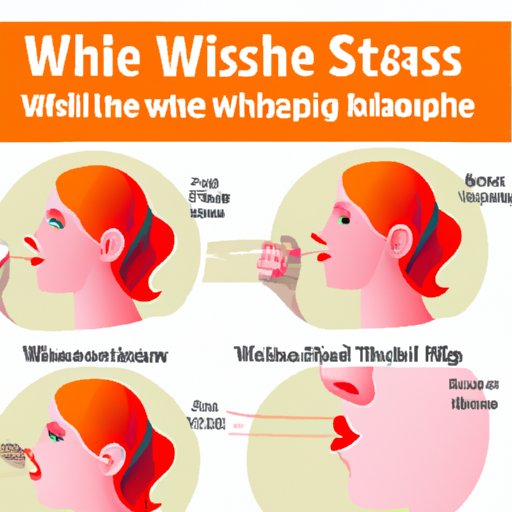
Introduction
Whistling may seem like a trivial skill, but it can actually come in handy in many situations. Whether you need to grab someone’s attention, whistle a tune, or just want a fun hobby, learning how to whistle is a useful skill to have. In this article, we will explore a step-by-step guide to master the skill of whistling.
Step-by-Step Guide
Whistling may seem effortless when you hear someone do it, but it can take some practice to get the hang of it. The basic mechanics of whistling involve creating a stream of air through a small opening made by your lips. Here are the steps for learning how to whistle:
Preparing your mouth
The first step is to wet your lips to create a better seal. You can lick your lips or rub them together with a bit of saliva. Next, make an “O” shape with your mouth by bringing your lips together. It’s important to relax your jaw muscles and avoid tensing up your lips.
Positioning your tongue
The position of your tongue can greatly affect your whistling sound. Place the tip of your tongue slightly below your bottom front teeth, and curve the rest of your tongue slightly upwards towards your palate. This creates a small space between your tongue and the roof of your mouth, allowing air to pass through.
Controlling your breath
You need to control the amount of air you’re exhaling and the speed of your breath. Take a deep breath and then exhale slowly and steadily while blowing air through the small opening created by your lips. Practice varying the force and speed of your breath until you find the sweet spot for that perfect whistle sound.
Creating different types of whistles
Once you master the basics, try different types of whistles by changing the shape of your lips or adjusting your tongue position. For example, you can create a higher-pitched whistle by making your lips more narrow, or a lower-pitched whistle by making your mouth wider. With time and practice, you can perfect a range of whistling sounds.
Tools and Techniques
Whistling can be affected by many different factors, including the shape of your mouth, breathing techniques, and tongue placement. Here are some handy tips to help improve your technique:
- Make sure your lips are slightly moist to create a better seal
- Avoid tensing your lips or jaw muscles, and stay relaxed
- Try altering the shape of your lips or tongue position to change the pitch of your whistle
- Experiment with varying the force and speed of your breath to create different sounds
- Practice in front of a mirror to help you identify any areas to improve
Common Mistakes
It’s common for beginners to make some mistakes when learning how to whistle. Here are some mistakes to avoid:
- Tensing up your lips and jaw muscles
- Not wetting your lips enough to create a good seal
- Not controlling your breath well enough, leading to uneven or weak whistling sounds
If you’re having difficulty, try these troubleshooting tips:
- Wet your lips more or try a different lip shape
- Experiment with your tongue position to find the right gap for the air to pass through
- Breathe in more deeply for a stronger whistle
Practice Exercises
Practice is key when it comes to perfecting your whistling skills. Here are some exercises to help you improve:
The Lip Trill
This exercise involves blowing air through your lips while keeping them very relaxed. This creates a vibrating “trilling” sound and can help you get used to the feeling of controlling your breath while keeping your lips relaxed.
The Tongue Trill
Similar to the lip trill, this exercise requires creating a vibrating sound by blowing air through a small space between the tip of your tongue and the roof of your mouth. This can help you identify the right gap to create a clear whistle sound.
Whistling with Water
Fill a glass with water and try whistling into it. The water helps create a clearer, resonant sound and can help you identify any areas you need to improve.
Benefits of Whistling
Aside from being a fun skill to have, whistling actually has some benefits for both your psychological and physical health. Here are some benefits:
- Boosts mood by releasing endorphins
- Improves lung capacity by strengthening your diaphragm and breathing muscles
- Reduces stress and anxiety by promoting relaxation and deep breathing
Conclusion
Learning how to whistle is a skill that can be enjoyed by anyone, and with practice, you can achieve some great results. Remember to keep your lips and jaw relaxed, experiment with tongue placement, and control your breath to create different sounds.





